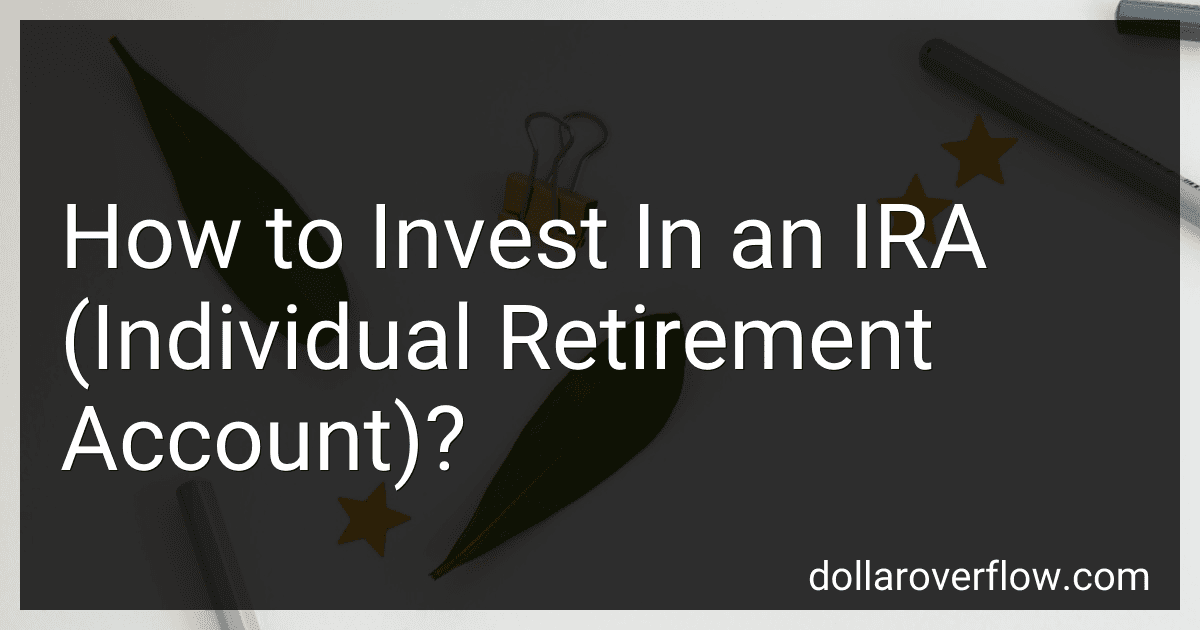Investing in an Individual Retirement Account (IRA) is a smart way to save for your retirement while also benefiting from potential tax advantages. To get started, you first need to choose between a traditional IRA or a Roth IRA. A traditional IRA allows you to make tax-deductible contributions, but you will pay taxes on withdrawals during retirement. A Roth IRA, on the other hand, does not offer immediate tax deductions, but withdrawals in retirement are tax-free.
Next, you will need to open an IRA account with a financial institution such as a bank, brokerage firm, or online investment platform. You can contribute up to a certain yearly limit based on your age and income level. It's important to do your research and choose investments that align with your risk tolerance and retirement goals.
Once your account is opened, you can start investing in stocks, bonds, mutual funds, or other assets. You can also set up automatic contributions to your IRA to ensure consistent savings over time. Keep track of your investments and make adjustments as needed to stay on track with your retirement savings goals.
Overall, investing in an IRA is a great way to secure your financial future and enjoy a comfortable retirement. Consult with a financial advisor if you need help determining the best IRA option for your specific situation.
What is the age limit for contributing to an IRA?
The age limit for contributing to a Traditional IRA is 70 ½ years old. However, there is no age limit for contributing to a Roth IRA as long as you have earned income.
How to calculate your maximum IRA contribution?
To calculate your maximum IRA contribution for the tax year, there are a few factors to consider:
- Determine your income: Your maximum IRA contribution is based on your earned income for the tax year. Earned income includes wages, salaries, bonuses, commissions, and self-employment income. It does not include income from sources such as rental properties or investments.
- Know your age: The maximum IRA contribution limit varies based on your age. For 2021, individuals under the age of 50 can contribute up to $6,000 to a traditional or Roth IRA, while those aged 50 and older can contribute up to $7,000.
- Consider your filing status: Your filing status can also affect your maximum IRA contribution limit. For example, if you are married and file jointly, both you and your spouse can make contributions to your respective IRAs, doubling the potential contribution amount.
- Determine if you are eligible for a traditional IRA deduction: Your eligibility to deduct contributions to a traditional IRA from your taxable income may impact the maximum amount you can contribute. If you are covered by a retirement plan at work, your deduction limit may be reduced or eliminated based on your income level.
Once you have these factors in mind, you can calculate your maximum IRA contribution by subtracting any existing contributions or rollovers from your limit and adjusting for any deductions you are eligible for. It's always a good idea to consult with a financial advisor or tax professional to ensure you are contributing the correct amount based on your individual circumstances.
What is the difference between a self-directed IRA and a traditional IRA?
The main difference between a self-directed IRA and a traditional IRA is the level of control the account holder has over their investments.
In a traditional IRA, the account holder can only invest in stocks, bonds, mutual funds, and other traditional investments approved by the custodian of the account. The custodian typically has a pre-approved list of investment options for the account holder to choose from.
On the other hand, a self-directed IRA allows the account holder to have more control over their investments. With a self-directed IRA, account holders can invest in a wider range of assets, including real estate, precious metals, private equity, and more. The account holder is responsible for researching and selecting their own investments, and they have more flexibility in choosing how to diversify their retirement portfolio.
Overall, the key difference between a self-directed IRA and a traditional IRA is the level of control and flexibility that the account holder has in managing their investments.
How to roll over funds from a 401(k) into an IRA?
Rolling over funds from a 401(k) into an IRA can be a smart move if you want more investment options or better control over your retirement savings. Here are the steps to follow:
- Decide on the type of IRA you want to roll over your 401(k) funds into - traditional IRA or Roth IRA. Consider factors like tax implications and your long-term financial goals.
- Open an IRA account with a financial institution of your choice. Make sure the institution offers the type of IRA you want and has the investment options you are interested in.
- Contact your 401(k) plan administrator and request a direct rollover of your funds into your new IRA account. This means that the funds will be transferred directly from your 401(k) into your IRA without any taxes being withheld.
- Fill out any necessary paperwork provided by your 401(k) plan administrator to initiate the rollover process. This usually includes providing information about your new IRA account.
- Monitor the rollover process and make sure the funds are successfully transferred into your new IRA account. It may take a few weeks for the transfer to be completed.
- Once the funds are in your new IRA account, you can start investing them based on your investment goals and risk tolerance.
- Consider consulting with a financial advisor before making any investment decisions to ensure that your investment strategy aligns with your financial goals and risk tolerance.
Remember that there may be tax implications and potential penalties for not following the rollover process correctly, so it's important to carefully follow the steps outlined above.
